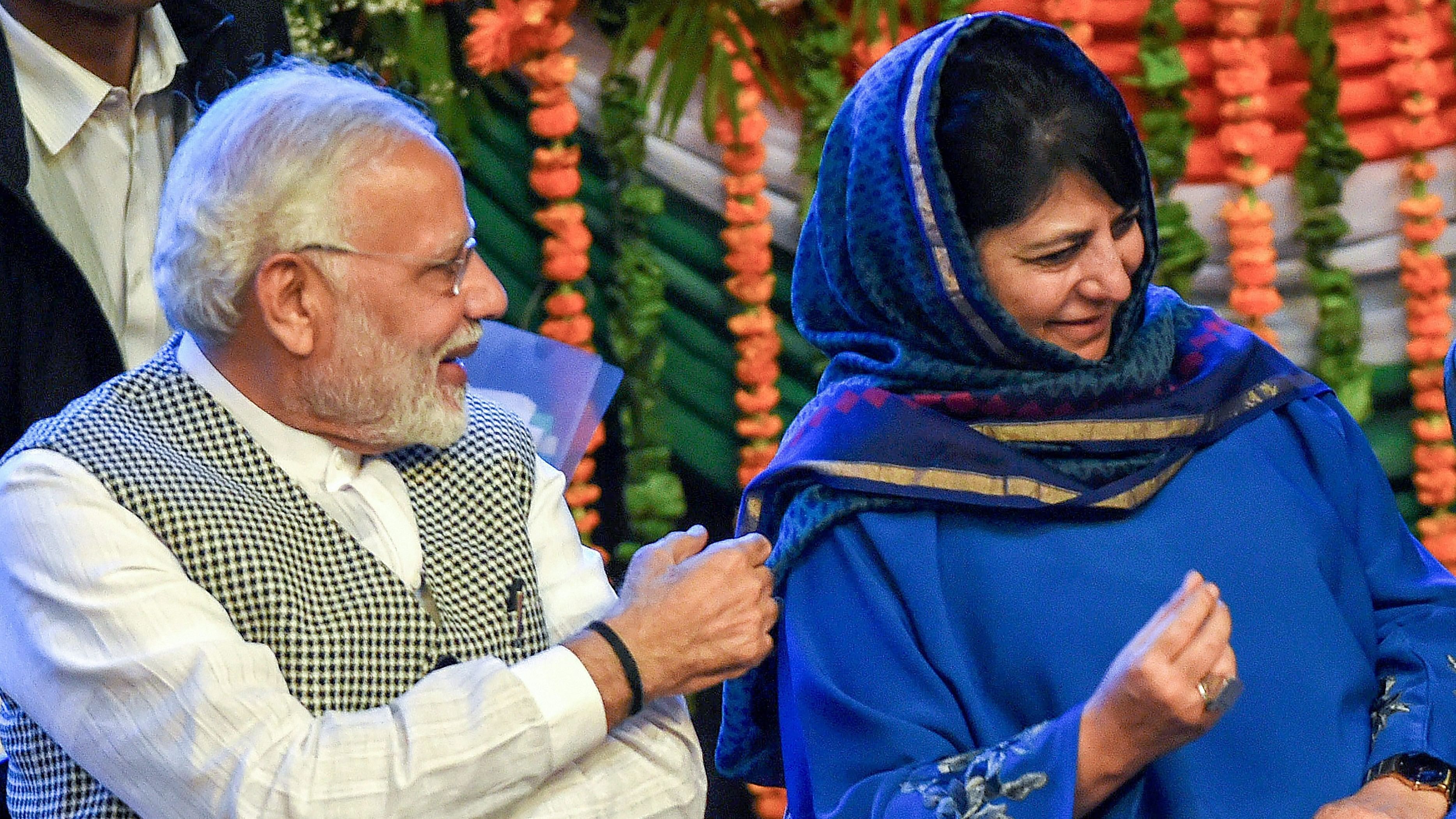
Prime Minister Narendra Modi with with former J&K Chief Minister and PDP chief Mehbooba Mufti.
Credit: PTI File Photo
Jammu and Kashmir voted in the first phase of its Assembly elections on September 18, 2024, with subsequent phases scheduled for September 25 and October 1, 2024.
The last elections in J&K were held a decade ago in 2014, and much water has flown in the Jhelum since. These are the first Assembly elections in the Union Territory (UT) since the abrogation of Article 370, marking a significant political moment as the new assembly will be for a UT, not a state.
Coalition politics, which has long shaped the political landscape of the region, continues to dominate. In the current election, the National Conference (NC) and Congress have formed a seat-sharing agreement, with NC contesting 51 seats, Congress 32, and smaller parties like the CPI(M) and J&K Panthers Party contesting one each.
As in the other states of India, coalitions have become a defining feature of Jammu and Kashmir's political history. Out of the five coalition governments since 1947, only the Congress-NC alliance from 2009 to 2015 lasted a full term. Others collapsed midway, leading to political instability.
As Jammu and Kashmir gears up for its first Assembly elections in a decade, here’s a short history of coalition politics in J&K.
1975: The First Coalition
Jammu and Kashmir's first coalition government was formed in 1975 after a historic accord between NC leader Sheikh Abdullah and Prime Minister Indira Gandhi. Abdullah led the NC-Congress government, but Congress withdrew its support in 1977, leading to the dissolution of the Assembly.
1982: A Turbulent Coalition
In 1984, Ghulam Ahmad Shah, Farooq Abdullah’s brother-in-law, formed a coalition after engineering defections within the NC with Congress’s support. However, the government was short-lived. In 1986, Farooq Abdullah managed to return to power by forming a coalition with Congress through the Rajiv-Farooq Accord.
2002: The PDP-Congress Alliance
The 2002 Assembly elections resulted in a fractured mandate, leading to a coalition government between the newly emergent People's Democratic Party (PDP) and Congress. The two parties agreed to a rotational chief ministership, with Mufti Mohammad Sayeed serving the first three years, followed by Ghulam Nabi Azad. However, the government fell when the PDP withdrew support over the Amarnath land allocation issue.
2009: The First Full-Term Coalition
In the 2009 elections, another fractured mandate led to a coalition between NC and Congress, which successfully completed its full term—the only coalition government in J&K to do so.
2015: Ideological Opposites Unite
In 2015, BJP made its first-ever foray into government formation in J&K by forming an unlikely coalition with the PDP. While the PDP secured its seats from Muslim-majority Kashmir, the BJP won in Hindu-dominated Jammu. Despite their ideological differences, the parties stitched together a power-sharing agreement. However, tensions soon surfaced, and the government collapsed in June 2018.